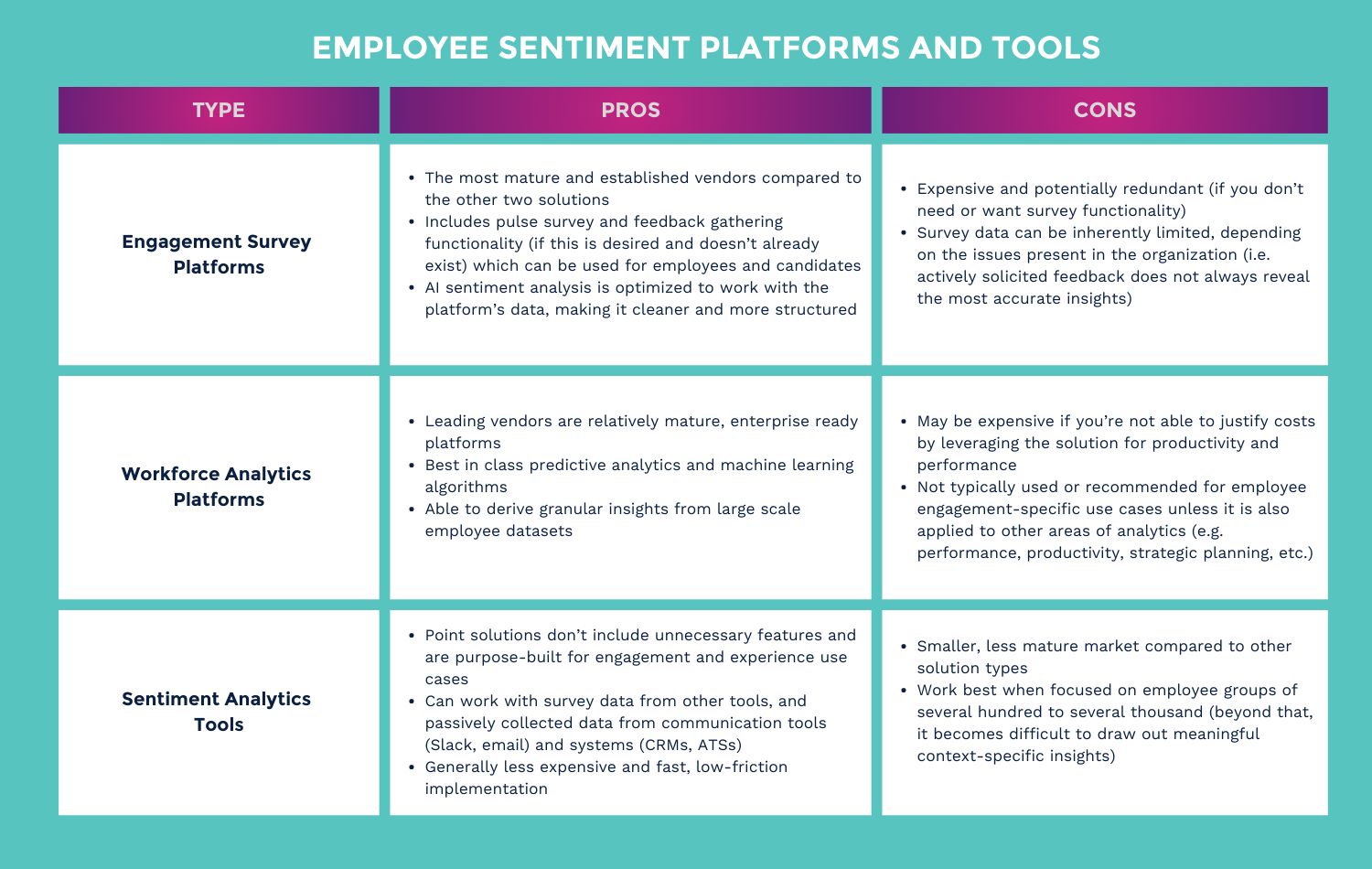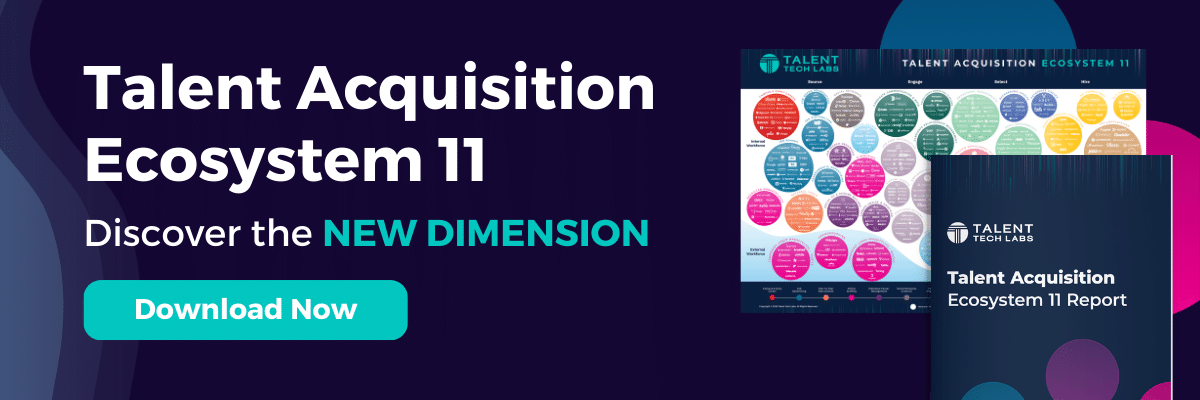Employee listening plays a vital role in talent retention. In today’s technologically advanced world, organizations have a vast array of employee listening technology tools and resources at their disposal to facilitate effective employee listening. At Talent Tech Labs, our ecosystem of Talent Management solutions investigates new and emerging technologies being applied to the post-hire talent lifecycle. One of the ecosystem’s key sub-verticals is Employee Listening, which has historically focused on employee surveys and 360 feedback. We are tracking employee listening technology trends and seeing more innovative solutions that apply advanced data analytics enter the space.
The Employee Listening technology landscape can be broken down along two dimensions: “Active” versus “Passive” tools and “Descriptive” versus “Prescriptive” tools. Active Employee Listening involves administering surveys or questionnaires to proactively collect engagement data from employees, typically on some time-based interval (monthly, quarterly, or at specific “moments” such as a promotion or anniversary). Passive Employee Listening tools integrate into corporate systems and give leaders insights into the “average day” of an employee, as well as how individuals and teams collaborate with one another. Some passive listening tools apply “sentiment analysis” to free text data from employee surveys to give leaders insights into how employees may be feeling based on their responses.
The #Employee Listening technology landscape can be broken down along two dimensions: “Active” versus “Passive” tools and “Descriptive” versus “Prescriptive” tools. Click To TweetWhat is Employee Sentiment Analysis?
The post-pandemic evolution of remote work is advancing interest in methods of passively collecting and analyzing alternative unstructured data from communication channels and productivity streams (e.g., calendars, emails, Asana, Slack, Salesforce, etc.) to understand metrics such as work-life balance, meeting effectiveness, employee engagement and sentiment, etc. We are seeing a market emerge for passive employee listening tools that use sentiment analytics: a technique of natural language processing (NLP) to understand the text’s meaning, and natural language understanding (NLU) to identify the user’s sentiment within a body of text and determine the objective of the communication record. Machine learning is also used to automatically monitor and analyze qualitative data that describes how employees feel about their organization.
Talent Tech Labs is seeing a market emerge of passive #employee listening tools that use sentiment analytics: a technique that uses natural language processing (#NLP) natural language understanding (#NLU). Click To TweetWhat is the Current Marketscape for Employee Sentiment Analysis?
The best solutions on the market for measuring employee sentiment come in three categories:
- Engagement Survey Platforms that apply sentiment analysis to survey feedback data
- Workforce Analytics Platforms that apply sentiment analysis to measure employee engagement
- Sentiment Analytics Tools that work with existing organizational data and survey data from other tools.
Below, we have broken down the pros and cons of each solution category:
 The best solutions on the market for measuring #employee sentiment come in three categories: Engagement Survey Platforms, Workforce Analytics Platforms and Sentiment Analytics Tools. Click To Tweet
The best solutions on the market for measuring #employee sentiment come in three categories: Engagement Survey Platforms, Workforce Analytics Platforms and Sentiment Analytics Tools. Click To Tweet
Where can Sentiment Analysis be used in the Talent Lifecycle?
All of the solutions above are mainly intended to be used for measuring internal employee sentiment, from post-hire onboarding through offboarding. Their out-of-box dashboards and reporting features are designed to track trends within an organization. However, sentiment analysis is also applied to candidate data, and this is usually found in talent acquisition technology, such as hiring platforms like iCIMS and interview management platforms like Brighthire. We have worked with a large staffing firm that is currently partnering with Brighthire to build candidate sentiment models based on interview data, but this is still in development and is not yet widely adopted in the industry.
Most firms are still using traditional feedback surveys for measuring candidate sentiment. However, candidate surveys are known to be difficult for getting accurate readings because the candidate’s motivation influences their response. For example, candidates who really want to work for an organization will tend to give more positive feedback, but this doesn’t help you understand how to improve the hiring experience for (typically more desirable) candidates who are neutral toward working for an organization.
Candidate sentiment analysis is still an emerging use case in the market compared to its use for internal employee engagement. The main reason why there aren’t solutions on the market that focus on both candidate and employee sentiment is because sentiment analysis is a domain-specific task, and what may be considered positive in one domain may not be positive in another domain. This is because sentiment expressions used in different domains are often unique.
Candidate sentiment analysis is still an emerging use case in the market compared to its use for internal employee engagement. Click To TweetWhere Can I Find More Information?
If you are considering ways to generate more insights into your employee or candidate engagement, we have evaluated several innovative tools on the market that work with existing data from your tech stack (surveys, CRMs, interview platforms, etc.). Contact us to learn more about our research and advisory insights for Employee Listening and Candidate Engagement technologies. Reach out today!

